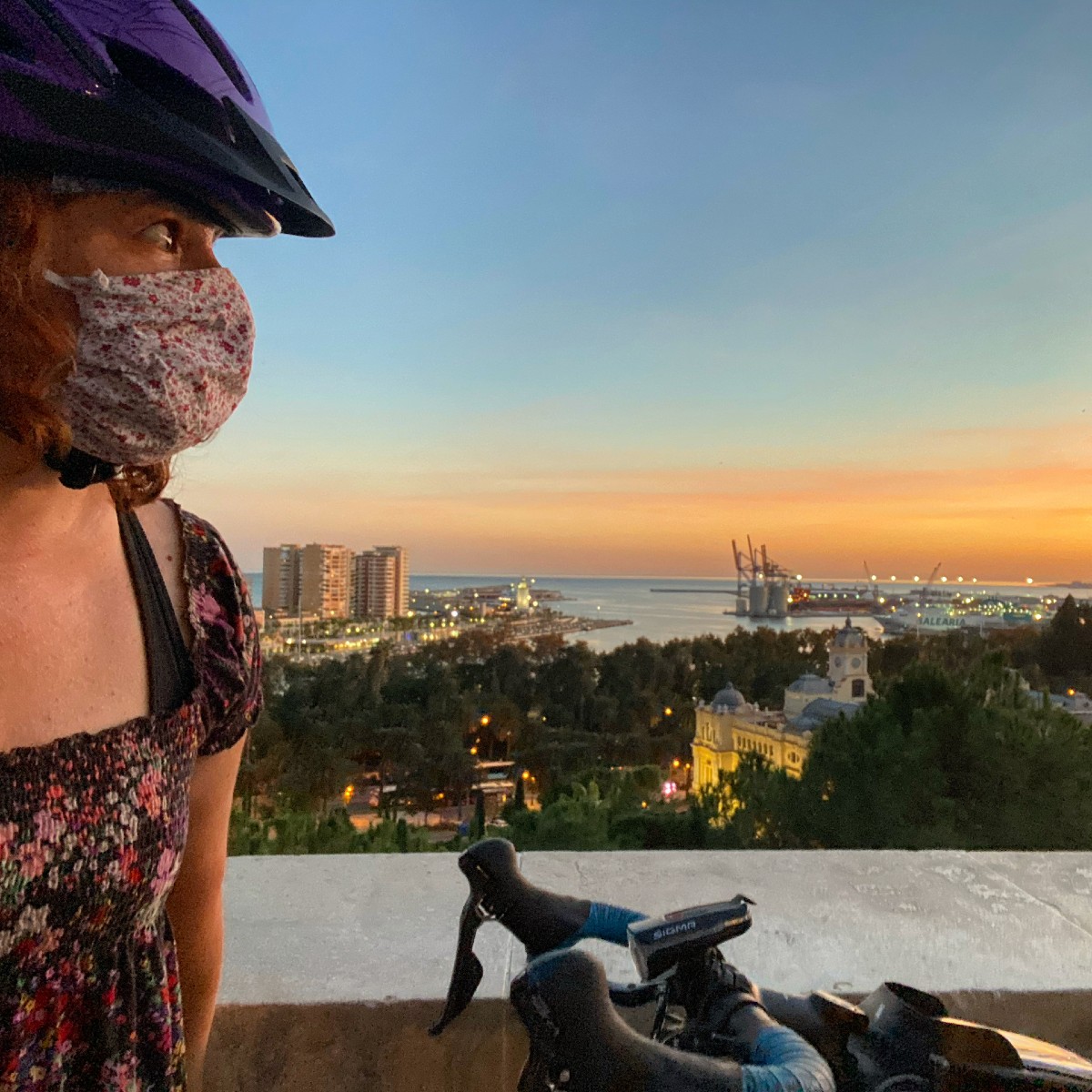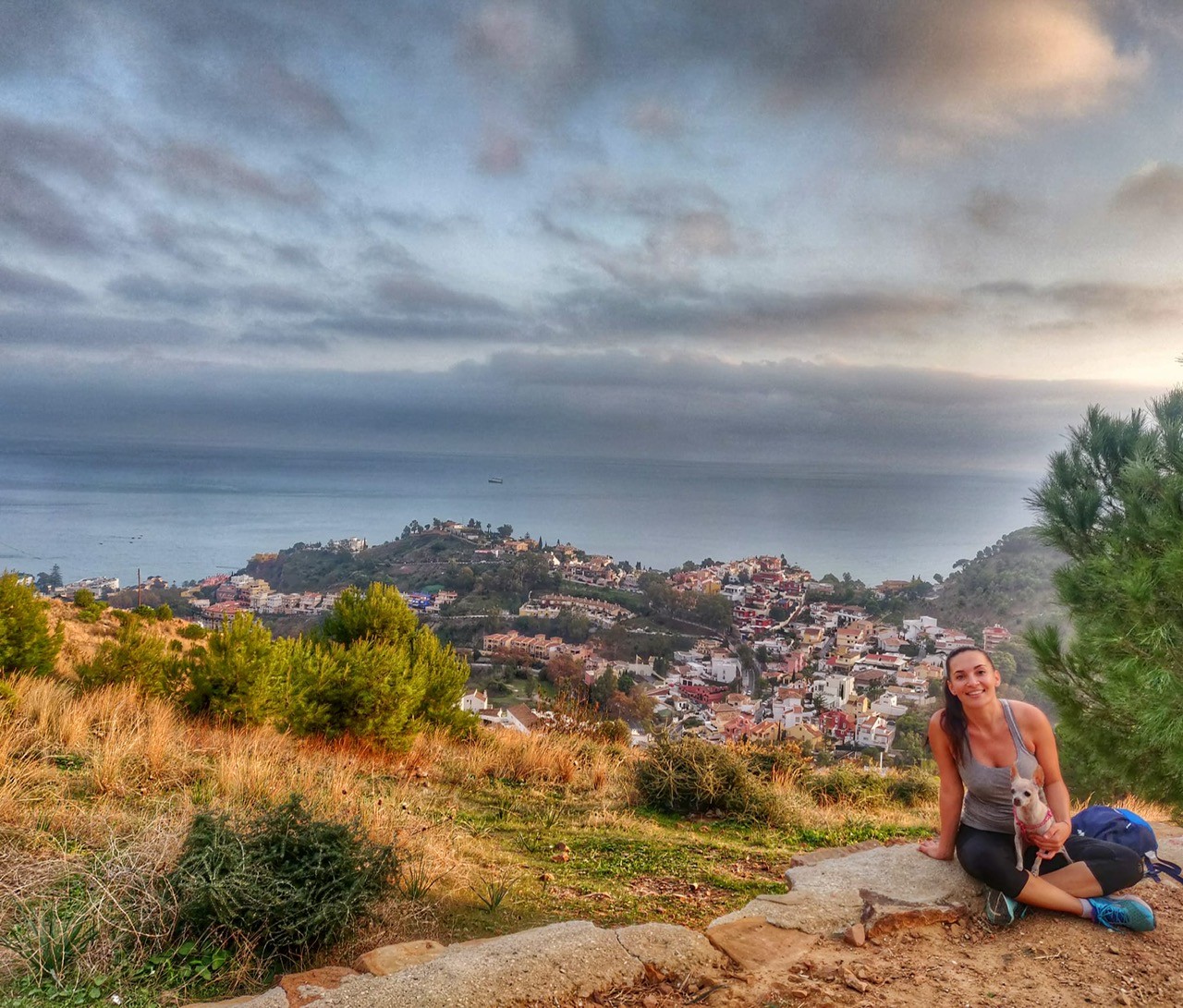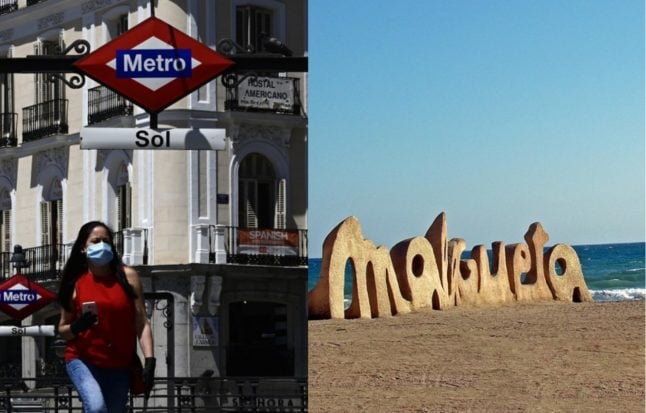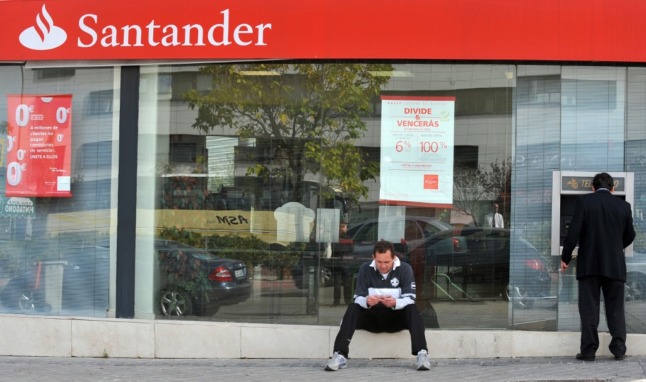Marietta Sandilands spoke with three people who called Madrid their home but who have recently made the move from the capital to Malaga, about how and why they made the decision.
Shaheen Samavati, Co-founder of content and translation agency Vera Content, moved this summer while travel consultant and founder of Spain Less Traveled Karen Rosenblum, as well as community builder and founder of She Hit Refresh, Cepee Tabibian, both moved in the autumn.

Shaheen made the move to Malaga in the summer.
How did you make the decision to move?
Cepee:
The decision to move came suddenly; I had no plans to leave, I’d built a life and group of friends that I loved in Madrid. In October I was feeling the weight of many things at once and also caught Covid; the weight of carrying it all with me into the winter felt daunting. Madrid didn’t feel the same because of the restrictions and my circle of friends was not meeting up like they used to. I felt like I needed to escape the city for a bit to refresh. I saw friends leaving the city for the coast and realised, Oh I don’t need to stay here, I can go somewhere new, where I can do things I’d love to do that would be really good for me, like spending time outdoors.
Karen:
The pandemic was a key factor in my move. I’d moved into a tiny interior box apartment in Madrid and had obviously never anticipated being locked in there. When the restrictions were relaxed in Madrid in June I got a bike and started cycling around the city which I really enjoyed. But then cases started rising again across Spain and it became clear, this wasn’t over. The thought of being stuck in a city again with no access to nature and limitations on movement was not good. I didn’t enjoy Malasaña like I used to; it was too hip, too young – I felt like I’d outgrown the place that seemed fun initially. Things fell into place quite quickly; I came on an exploratory mission to Malaga saying I would not go back to Madrid without having signed a lease here, and that’s what happened!
Shaheen:
Myself and my partner both lived in Malaga previously; I lived here for 2 years and he lived here for 10 years and so we had a group of friends here. We came to Madrid initially for work reasons as our business partner wanted an office in Madrid which made sense as that’s where our market was. Madrid was always meant to be a stepping stone, probably on the way back to Malaga. Initially we came to Madrid for 2 months which became 6 months and then a year, at which point we said ok, we are living here and decided we would spend 3-5 years to establish the business. Recently, my partner’s work changed and he was able to work more remotely which was what he wanted, so staying in Madrid wasn’t as necessary. I also tried to reduce my need to come to the office in Madrid and started working from home more.

Karen is enjoying exploring Malaga and its surroundings by bike.
Why did you choose Malaga?
Cepee:
My work is remote, and I figured if I am going to hibernate anyway until April it could be somewhere else other than Madrid. The weather in Malaga is great. I’m from Texas and used to mild winters. Winter in Madrid is too long and too cold for me. Here, I’m able to go into the sea in November which is great. Malaga is also less expensive and there are lower numbers of Covid cases here. I also already knew some people living here which definitely helped; I think I might not have moved if I didn’t.
Malaga is an outdoorsy active city; as well as the sea, there are mountains, you have access to nature. The other evening I did an urban hike which was exciting. And I’m also starting beach volleyball too, as well as cycling. The city feels slower paced and more nurturing. I like the hustle and bustle of city life but with this year, that felt stressful and unpredictable. I don’t feel the same pressure here as I did in Madrid. Also, even with the restrictions here, it still feels like there is a social vibe, people are still meeting up but in a different and smaller way.
READ ALSO:
- Seven things to know before moving to Spain's Andalusia
- Living in Spain: Why Valencia is officially the best city in the world for expats
Karen:
It’s a great city to be in; I thought about moving to Almería initially but it was a bit remote for me so Malaga seemed a better choice. Malaga has the sea, access to nature and also a lower cost of living. I work in travel and Andalucía is my speciality as well as being the part of Spain I love the most. I’m getting healthier, cycling lots which is amazing. There’s lots of options for cyclists and also a big natural park within the municipality which is beautiful. I feel like I’m able to get back to what I love doing here.
I’m living in a very local neighbourhood where few people speak English. Although there’s no hipster coffee shops or cool vegan restaurants around the corner, right now I don’t need those things. Things close on a Sunday, which took a bit of getting used to, but I feel like I’m finally living abroad in Spain: it’s sunny, I’m by the coast and there are blue skies.
Shaheen:
As my partner and I had both lived in Malaga previously we had friends here. There were other strategic factors that influenced our decision: there was the beach, the great weather, the mountains. You can ski and go to the beach in the same day which is great. You have access to nature here and it is a medium-sized city, so has the level of metropolitan-ness that I need. It’s also well connected; there is Malaga airport nearby with low cost flights as well at the AVE (high speed) train station.

Cepee and her companion Chloe are looking forward to a warmer winter.
Do you see this as a temporary or long-term move?
Cepee: It feels temporary, I signed a 6-month lease with the aim to come back to Madrid in the Summer if things are better there and it feels like the city I used to know. I feel like I’ll be back to Madrid, but I’m also open to seeing what happens. Although I don’t see myself in Malaga long-term, anything can change!
Karen:I always knew I would end up in Andalucía: it was always in the long-term plan; the pandemic sped up my decision making and made me spring into action. I will come back to Madrid but as a visitor, I can’t see myself living there again. Madrid was a good initial base when I arrived, and I met great people and tapped into the entrepreneurial network there, but I feel like I enjoyed what Madrid had to offer and now I want something other than big city landlocked living. In California I lived in a city, but I was close to nature and beaches. Malaga has that too and you can go to the beach and mountains within a few hours. I feel like it will also benefit my professional life; I have a travel company specialising in bringing people to Spain for 2-3 week excursions. I’m really excited to plan trips for people here and build partnerships with people locally.
Shaheen: the pandemic has been a good test run for living in Malaga. Pre-pandemic the plan had been for my partner to move first and then for me to follow when work allowed. However, when the lockdown happened we decided to move together at the same time in July. It feels a better place to be than Madrid now; we live in a nicer neighbourhood that we did in Madrid, there’s a lot more nature and less concrete here, as well as less people.
Connect with Madrid based writer Marietta Sandilands on Linked In or Twitter
READ ALSO:





 Please whitelist us to continue reading.
Please whitelist us to continue reading.
Member comments